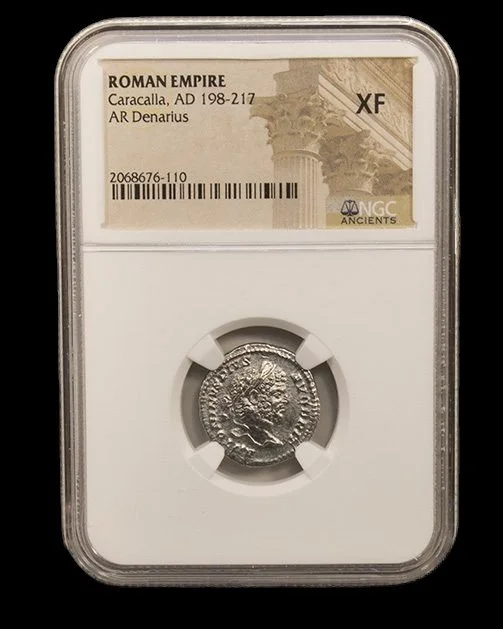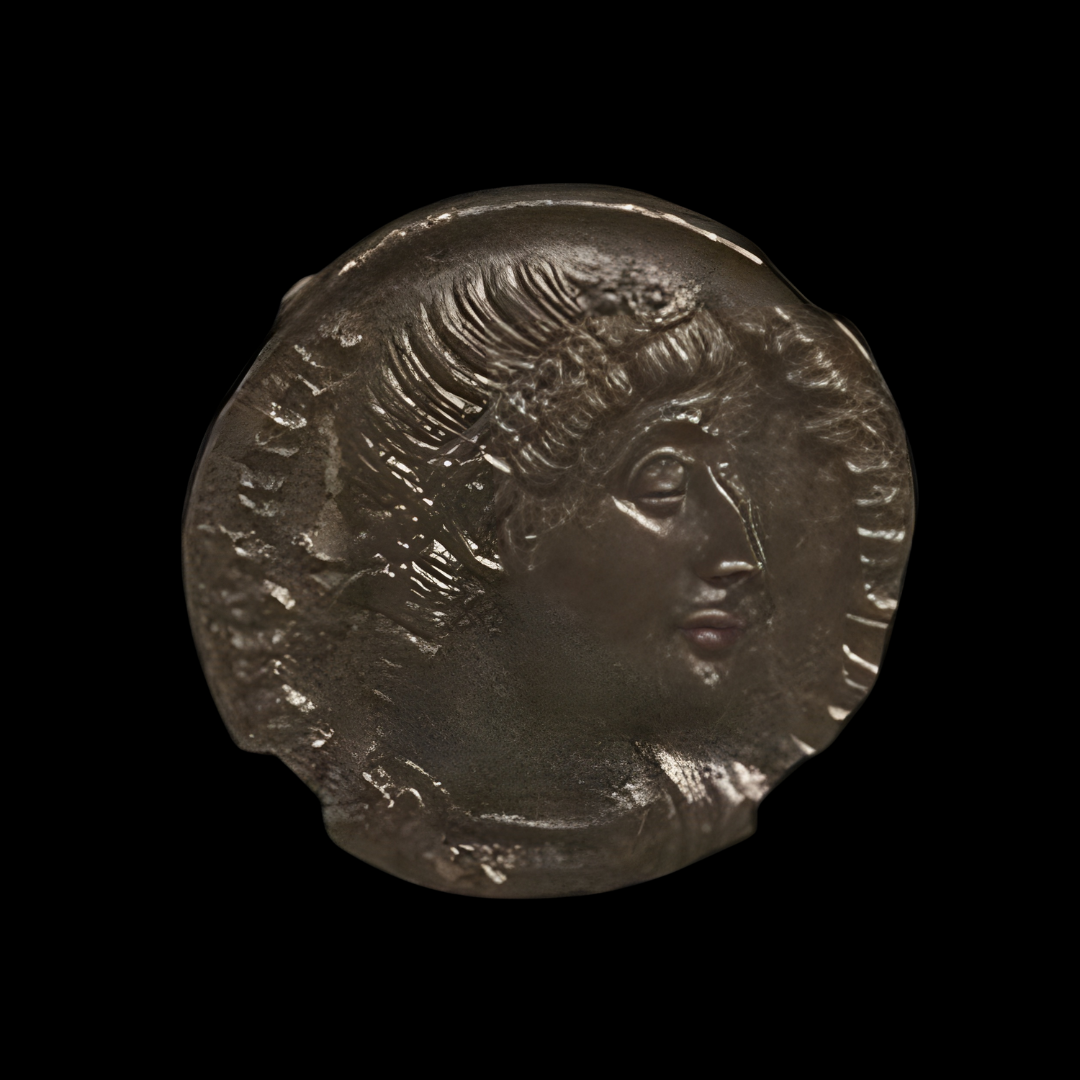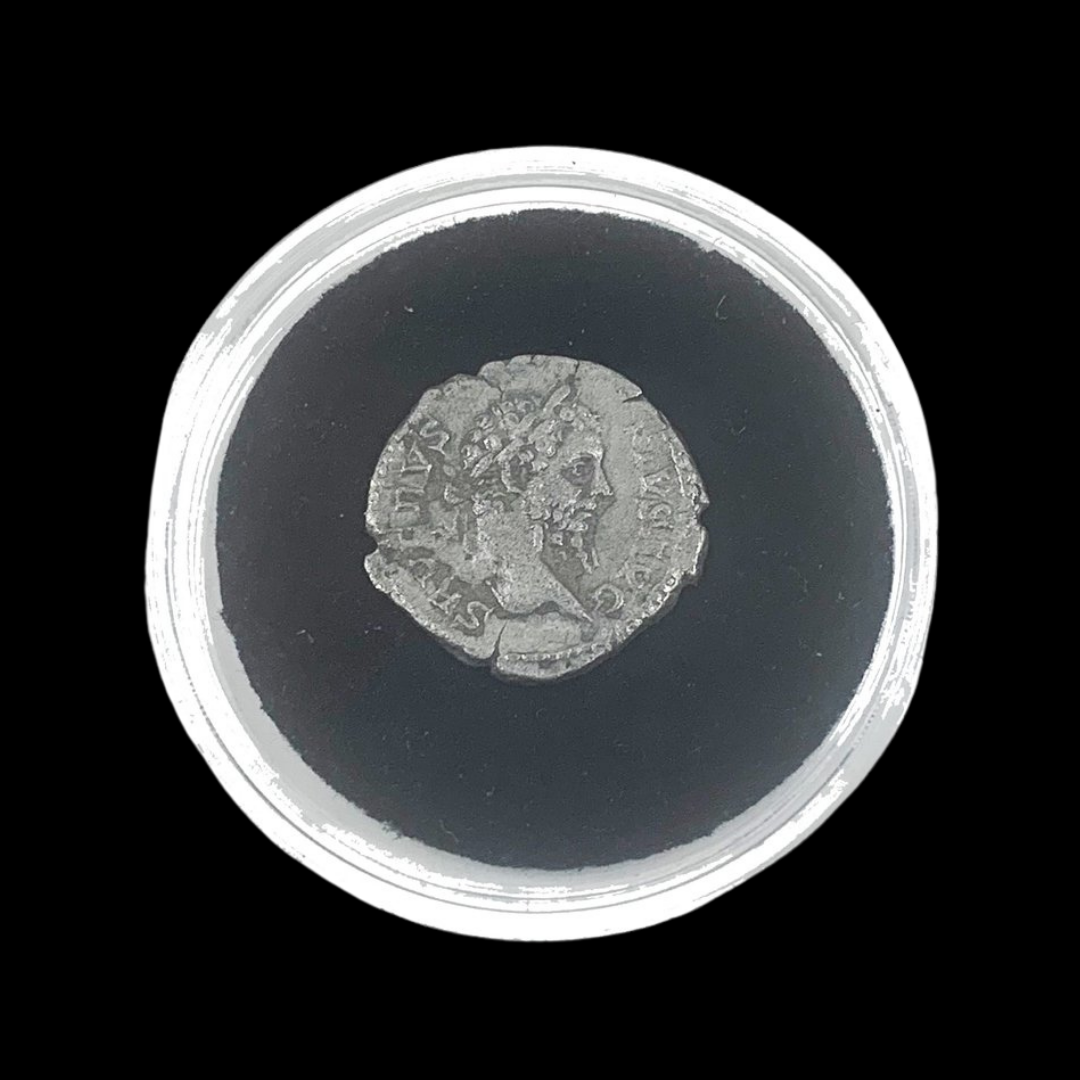 Image 1 of 8
Image 1 of 8

 Image 2 of 8
Image 2 of 8

 Image 3 of 8
Image 3 of 8

 Image 4 of 8
Image 4 of 8

 Image 5 of 8
Image 5 of 8

 Image 6 of 8
Image 6 of 8

 Image 7 of 8
Image 7 of 8

 Image 8 of 8
Image 8 of 8









Roman Silver Antoninianus of Valerian I (about 1,765-1,772 years ago)
The coins shown are representative examples of the grade and type, but not the actual specimens for sale. For details on NGC’s grading standards and definitions, please refer to our NGC Grading page.
This silver-washed coin is an Antoninianus issued during the reign of Emperor Valerian I, who ruled the Roman Empire from 253 to 260 CE before suffering one of the most humiliating fates of any Roman emperor. The coin represents the increasingly militarized nature of Roman imperial politics during the Crisis of the Third Century.
Coin Description:
Front side: Portrait of Emperor Valerian facing right, wearing a radiate crown (distinguishing feature of the Antoninianus denomination), with his name and titles in Latin around the edge.
Back side: Likely features military themes, Roman deities like Jupiter or Mars, or personifications of virtues such as Fortuna, Pax, or Victoria.
Technical Details:
Billon composition (low silver content mixed with copper)
Denomination: Antoninianus (technically a double-denarius, though with debased silver content)
Weight: Approximately 3-4 grams
Diameter: Approximately 22-23 mm
NGC Certified for authentication and preservation
Minted between 253-260 CE
Condition as specified by NGC certification
Historical Significance: Valerian's reign ended in unprecedented disaster when he was captured alive by the Sassanid Persian King Shapur I in 260 CE during a campaign in the East. No Roman emperor had ever before been taken prisoner by a foreign power. According to Persian accounts, Valerian was used as a human footstool for the Persian king and eventually died in captivity. His body was reportedly preserved by taxidermy and displayed as a trophy in the Persian royal palace. This extraordinary humiliation marked a low point in Roman imperial prestige during the Crisis of the Third Century, leaving his son Gallienus to rule a fractured empire.
The coins shown are representative examples of the grade and type, but not the actual specimens for sale. For details on NGC’s grading standards and definitions, please refer to our NGC Grading page.
This silver-washed coin is an Antoninianus issued during the reign of Emperor Valerian I, who ruled the Roman Empire from 253 to 260 CE before suffering one of the most humiliating fates of any Roman emperor. The coin represents the increasingly militarized nature of Roman imperial politics during the Crisis of the Third Century.
Coin Description:
Front side: Portrait of Emperor Valerian facing right, wearing a radiate crown (distinguishing feature of the Antoninianus denomination), with his name and titles in Latin around the edge.
Back side: Likely features military themes, Roman deities like Jupiter or Mars, or personifications of virtues such as Fortuna, Pax, or Victoria.
Technical Details:
Billon composition (low silver content mixed with copper)
Denomination: Antoninianus (technically a double-denarius, though with debased silver content)
Weight: Approximately 3-4 grams
Diameter: Approximately 22-23 mm
NGC Certified for authentication and preservation
Minted between 253-260 CE
Condition as specified by NGC certification
Historical Significance: Valerian's reign ended in unprecedented disaster when he was captured alive by the Sassanid Persian King Shapur I in 260 CE during a campaign in the East. No Roman emperor had ever before been taken prisoner by a foreign power. According to Persian accounts, Valerian was used as a human footstool for the Persian king and eventually died in captivity. His body was reportedly preserved by taxidermy and displayed as a trophy in the Persian royal palace. This extraordinary humiliation marked a low point in Roman imperial prestige during the Crisis of the Third Century, leaving his son Gallienus to rule a fractured empire.

























